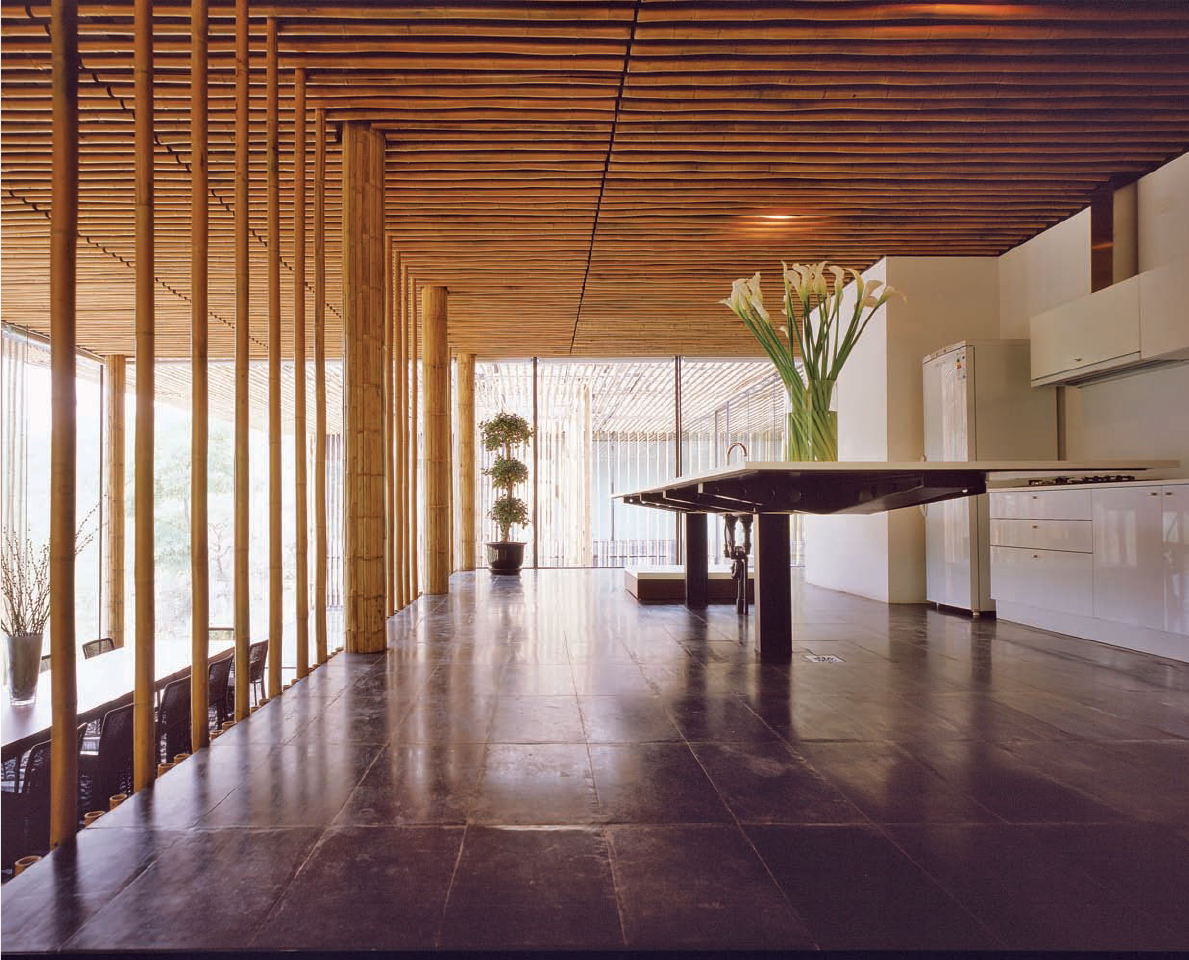
Kengo Kuma Architects,
Great (Bamboo) Wall, Beijing, China
e design of the house investigates the
material properties of the bamboo cane and
its architectural use on a number of levels,
the metaphoric included. Its lightness and
its smooth, subtly varied surface makes the
cane ideal as a screen and a fi lter between the
natural and built realms. Reinforced-concrete
cores fi ll the hollow interiors of larger canes
for the house’s structural columns, maintain-
ing a consistency of material.
Above An ecological imperative for this new
Beijing neighborhood was to incorporate
natural and locally sourced materials. Honor-
ing the long tradition of bamboo elements
in Asian homes, canes serve as a wall and
ceiling fi nish throughout, as fl ooring in the
bedrooms and lounge, and even as a washba-
sin in the guest bath. Locally quarried dark
slate adds a sense of depth and solidity.
Elemental and Experimental Materials
147
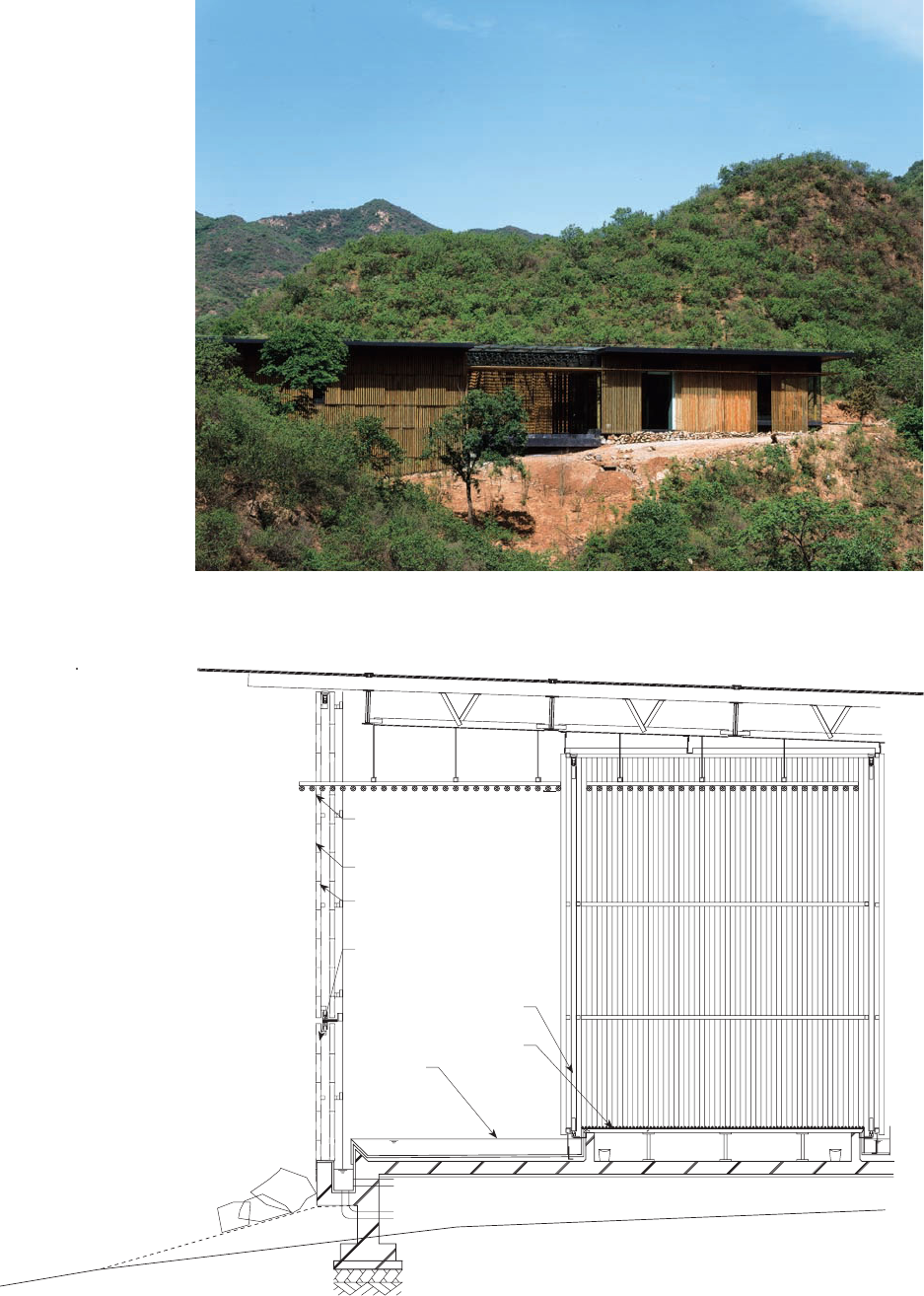
exposed bamboo louver ceiling,
dia. 60 mm (2
3
/
8
”) @ 120 mm (4
3
/
4
”),
corrosion-proofed
exposed bamboo louver (fi xed),
dia. 60 mm (2
3
/
8
”) @ 120 mm (4
3
/
4
”)
sliding bamboo partition (top-railed sliding),
exposed bamboo louver,
dia. 60 mm (2
3
/
8
”) @120 mm (4
3
/
4
”)
sliding bamboo partition (bottom-railed sliding),
exposed bamboo louver,
dia. 60 mm (2
3
/
8
”) @ 120 mm (4
3
/
4
”)
sliding bamboo partition (bottom railed sliding),
dia. 60 mm (2
3
/
8
”) @ 120 mm (4
3
/
4
”)
exposed bamboo fl ooring,
dia. 30 mm (1
1
/
8
”) @ 40 mm (1 ½”)
water surface
Above Appearing like an ancient structure
in the landscape, the linear house adjusts
to the existing topography by scribing the
bottom of the bamboo panels close to the
earth. e roof remains level. e residence
refl ects the architect’s critical attitude
toward buildings as disconnected objects
in space; with its natural bamboo wall, it is
instead an inconspicuous architecture.
148 Sustainable Environments
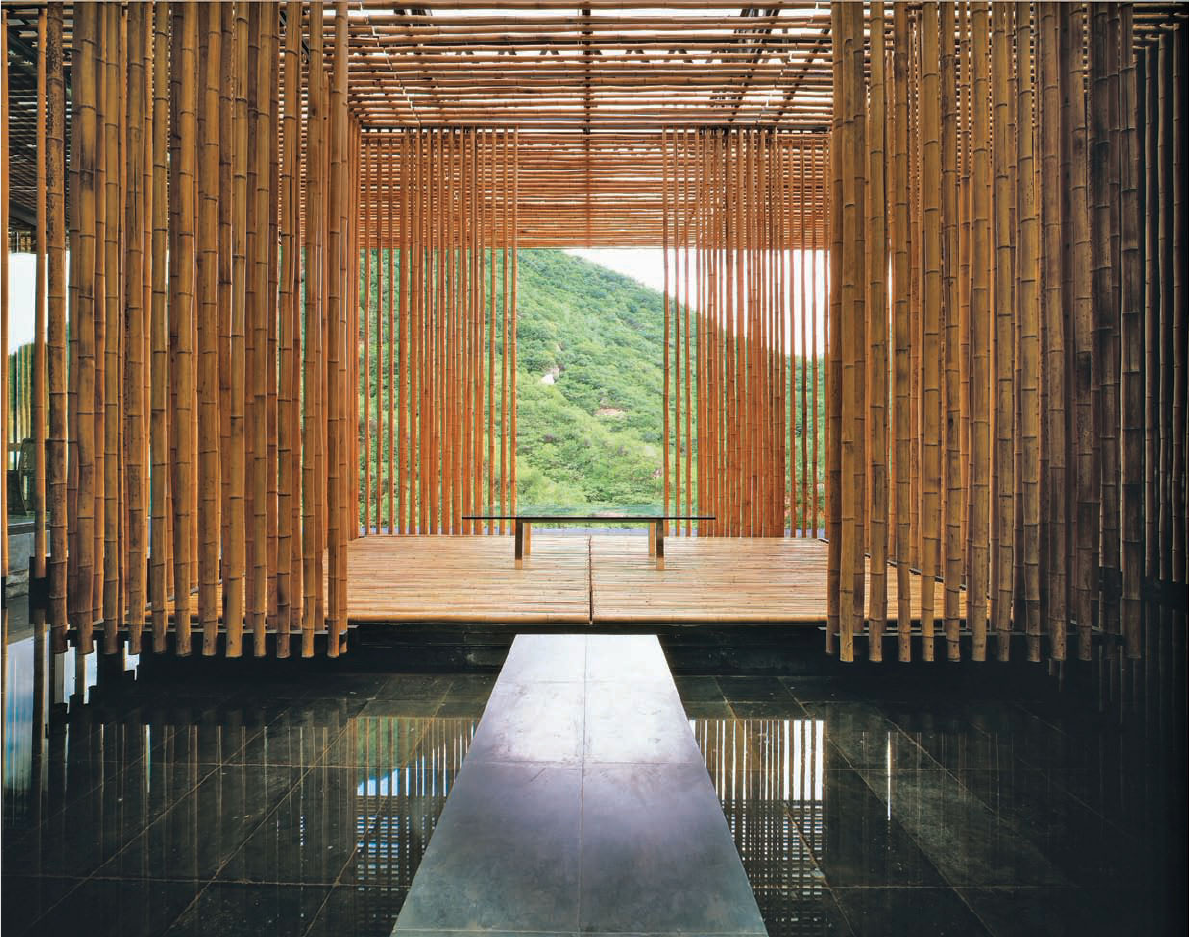
Above and Left roughout the house, the
bamboo partitions create varying degrees
of screening: In reference to the Great Wall
nearby, the bamboo walls connect rather
than divide two sides. While most of the
canes used in the partitions are 60 millime-
ters (2.36 inches) in diameter, the spacing
of the canes changes the amount of light or
separation from one room to another or from
the exterior to the interior. Sliding screens
overlap with fi xed panels for a more solid,
denser surface in the lounge and in other liv-
ing spaces. e fl oor of the lounge consists of
a smaller diameter whole cane.
Elemental and Experimental Materials
149
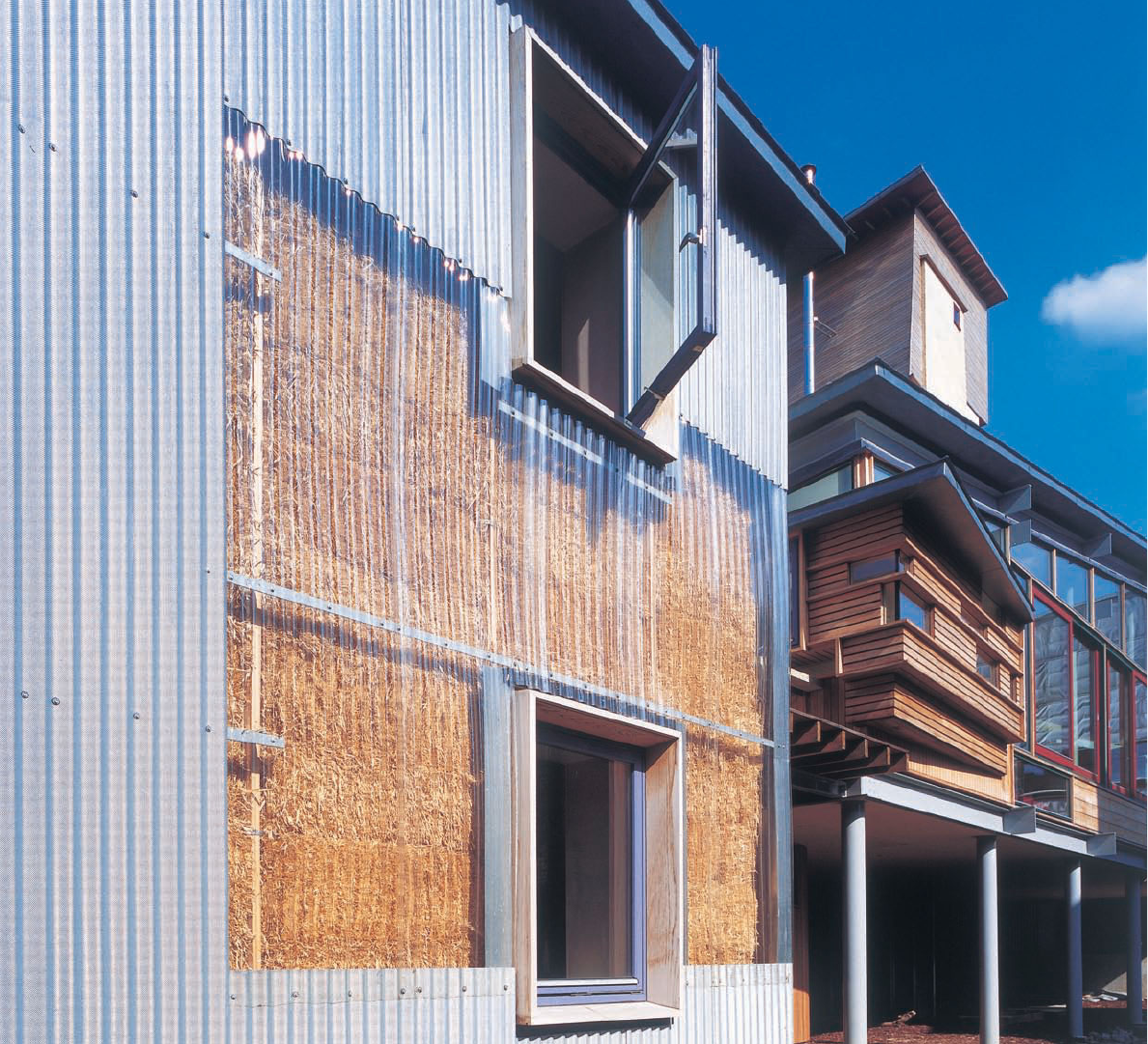
Sarah Wigglesworth Architects, Straw
House, North London, United Kingdom
A translucent rainscreen that ventilates the
wall provides a window onto the straw bale
infi ll that insulates half of the exterior walls
of this home. Simple to handle and quickly
installed, the bales are stacked between
structural timber ladder frames. With their
high insulative values, low embodied energy,
recyclability, and low cost, straw bales rep-
resent a renewable material that holds great
advantages over most present wall insulation
and construction methods.
150 Sustainable Environments
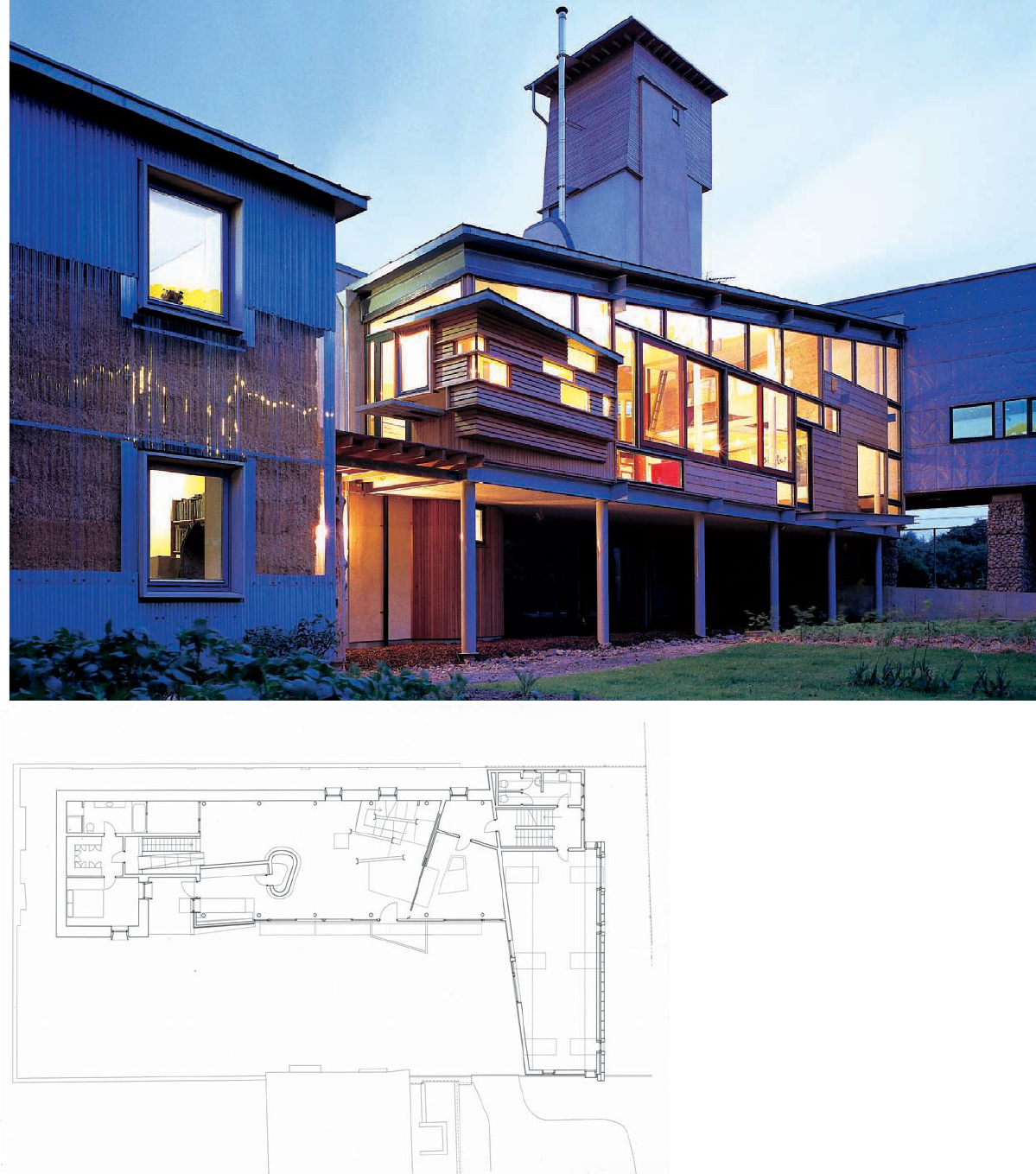
Elemental and Experimental Materials
Above e house combines many passive
environmental strategies that contribute
to the unique composition of architectural
elements and façades. Working in con-
junction with the thermal mass provided
by the straw bales, a large, glazed south
wall admits sun to warm the living areas.
e fi ve-story library tower functions as
a thermal chimney to ventilate the house.
Another experimental cladding is being
tested on the side façade of the offi ce wing
(visible on the right) in the form of a quilted
fabric wall fi nish.
Left e straw bales, 465 millimeters
(18.3 inches) deep line the north and west
walls, wrapping around the bedrooms at
the western end of the house. Each side of
the linked home and offi ce studio off ers a
material response to a specifi c site condi-
tion and orientation. e building combines
agrarian and utilitarian materials, such as
corrugated metal siding, that are unusual
but highly applicable in an urban context.
151
Get Contemporary Design in Detail: Sustainable Environments now with the O’Reilly learning platform.
O’Reilly members experience books, live events, courses curated by job role, and more from O’Reilly and nearly 200 top publishers.

